7 Things to See on the Isle of Portland Walk, Jurassic Coast, England
Are you wondering what it’s like to walk around the entire Isle of Portland? Well you’re in the right place!
In this blog post you’ll follow us as we complete the 16 km (10 mile) Isle of Portland loop of the South West Coast Path. Along the way you’ll see the iconic white and red striped Portland Bill Lighthouse and have the chance to climb an artificial sea stack. You can discover unique sculptures at an old quarry and visit the Olympic Rings Lookout Point where you can admire views of Chesil Beach, which is the only thing linking Portland to the mainland.
This Isle of Portland walk will also take you to the old ruins of a church and a castle and through a hidden cove filled with a very interesting and rich history. Obviously, your walk wouldn’t be complete without seeing dramatic cliffs, stunning views and wildlife in between the main features.
If you’d like to see our Isle of Portland walk with some drone footage then make sure to watch our YouTube video by clicking here. You can also watch our full Jurassic Coast series by clicking here.
Disclosure: This post may contain affiliate links, which means we may receive a small commission if you click a link and purchase something. Clicking these links won’t cost you anything, but it will help us to keep this site up and running! Learn more about our affiliate policy.
All you need to know about the Jurassic Coast
The stunning Jurassic Coast stretches from Orcombe Point, Exmouth in East Devon all the way to Old Harry Rocks, Swanage in East Dorset. The 154 km (96 miles) long coast was the first totally natural World Heritage Site to be designated in the UK.
The Jurassic Coast has 185 million years of geological history with rock formations from the Triassic, Jurassic and Cretaceous periods. As a result, the coastline is filled with some of the most amazing natural features. These include arches like Durdle Door, pinnacles and rock stacks like Old Harry Rocks, coves and limestone foldings like Lulworth Cove and Stair Hole and even a tide island called the Isle of Portland connected to the mainland only by a barrier beach.
Erosion is still taking place today, forming the landscape daily. The coast is being managed through a fine balance of protecting people but also allowing the natural process of erosion to continue to shape the landscape. This basically means that there are coastal defences put in place where houses are at higher risk, whilst no action is taken elsewhere. Here is a list of notable landslides that have altered the Jurassic Coast just in the past 20 years:
- A 400 m (1,300 ft) section of the coastline was reshaped after what is considered the worst landslide in 100 years in May 2008.
- In 2012 about 400 tonnes of rock fell onto the beach at Burton Bradstock causing a fatality.
- In 2016, another cliff fall happened at West Bay.
- After heavy rainfall further cliff collapse occurred at Hive Beach in Burton Bradstock in August 2020.
- The most recent collapse happened in April 2021 near Weymouth. This latest one was described as the biggest rockfall in the UK in 60 years.
What’s amazing about the Jurassic Coast is that you can walk the entire length of it via the South West Coast Path. The 1,014 km (630 miles) long path is considered England’s longest waymarked long-distance footpath running from Minehead in Somerset to Poole Harbour in Dorset.
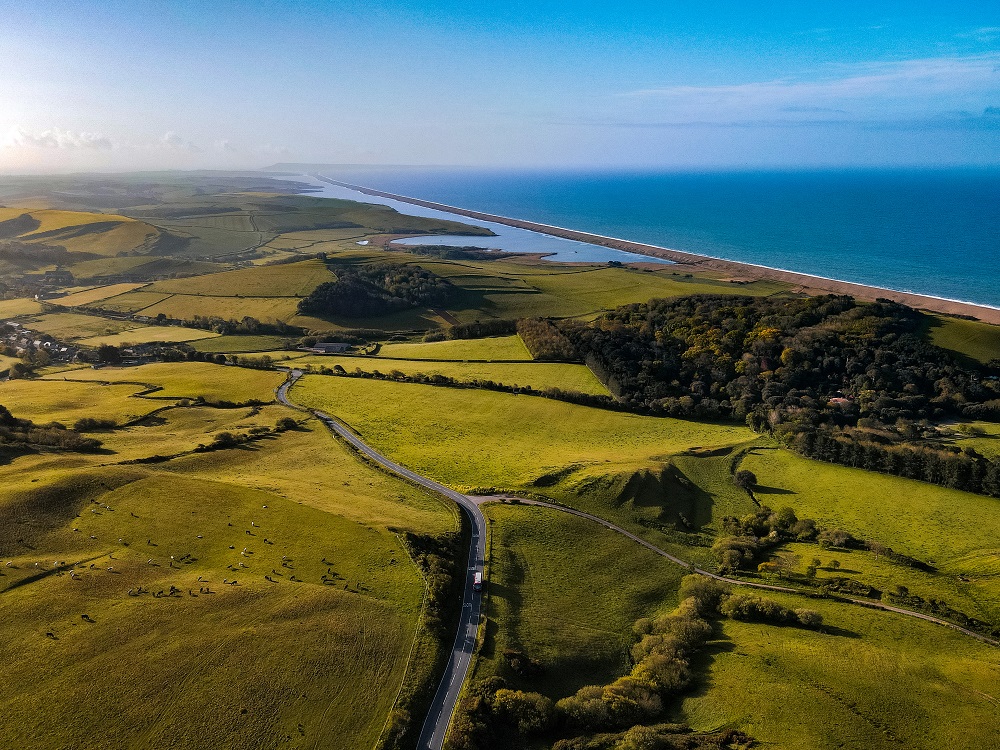
About the Isle of Portland
The Isle of Portland, located to the south of Weymouth, is a 6 km (4 m) long tied island. It’s a tied island because it’s only connected to the mainland by a barrier beach called Chesil Beach. Chesil Beach is a 29 km (18 m) long shingle beach connecting West Bay to the Isle of Portland. Portland is also the southernmost point of Dorset and it lies in the middle of the Jurassic Coast.
Did you know? – Portland still quarries its famous limestone rock, called Portland Stone, which was used in the construction of famous buildings around the world such as St Paul’s Cathedral, the eastern front of Buckingham Palace and even the United Nations Headquarters.
Geologically speaking, Portland is actually split into two areas: Underhill and Tophill. Underhill forms the northern part and is much steeper then Tophill which forms the southern part.
Since Portland is only connected to the mainland via Chesil Beach, coastal flooding has been a major issue for years. During major flooding the only link to the mainland is cut. Therefore, major schemes have been implemented over the years to provide protection. The flood defence techniques include a 550 m long gabion (a cage filled with rocks and concrete), a sea wall and a culvert (allowing water to flow under the road).
Did you know? – Apparently rabbits mean bad luck in Portland and you wouldn’t want to use the word ‘rabbit’ if you talked to some of the residents. People in Portland avoid using the ‘R’ word by using alternative descriptions like bunny. The reason why bunnies are bad omens most likely comes from the quarry workers. Usually, prior to a rock fall somewhere in the quarry people saw a bunny trying to get away. Rock falls are pretty dangerous and can cause landslides so no wonder workers didn’t want to see bunnies running around them. Their concern went as far as if someone saw a bunny, they would just go home until the quarry was declared safe again.
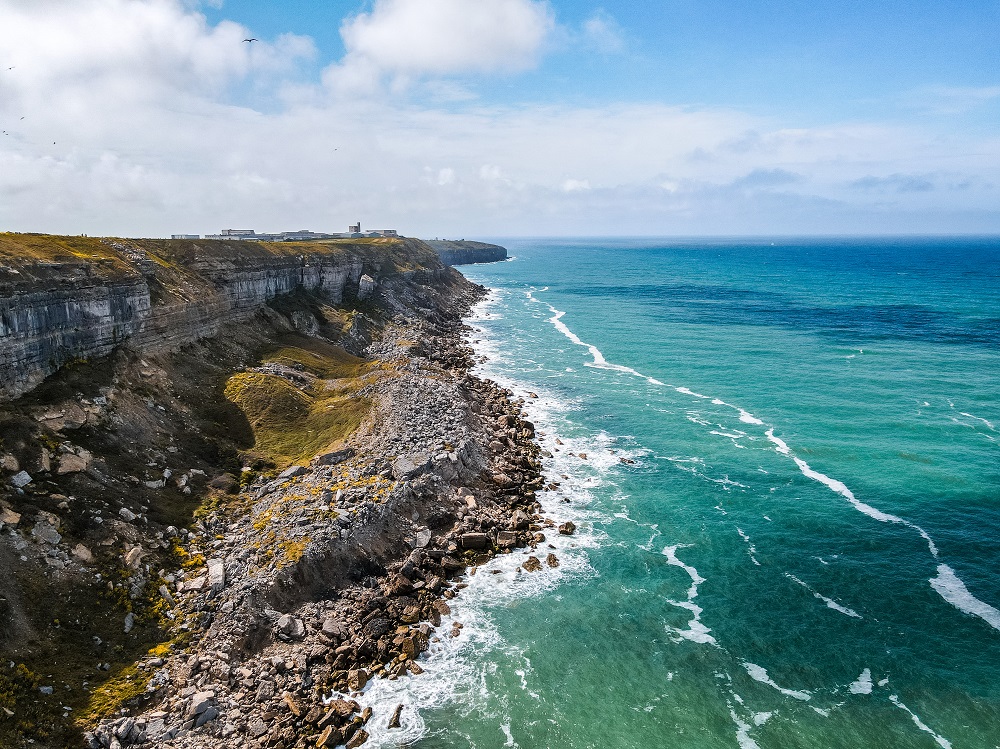
How to get to the Isle of Portland
By Car: The Isle of Portland is located 8 km (5 m) south of Weymouth. If you arrive by car, you can park at Portland Bill Car Park (Post Code: DT5 2JT) at the very southern point of Portland. You can also park at the Heights Hotel (Post Code: DT5 2EN) adjacent to the Olympic Rings Lookout Point if you prefer to do your walk the other way around.
Portland Bill Car Park cost £4.50 for up to 4 hours and £6 for up to 12 hours. If you’re planning on walking around the entire island then I highly recommend getting the up to 12 hours ticket. You don’t want to be rushed and you’ll need quite a few hours to complete the walk and see the sights.
If you don’t have your own car but would like to enjoy the freedom of a private vehicle, then you can always hire a car to get to the Isle of Portland.
By Public Transport: If you arrive by public transport you can take Buses 1 or 501 travelling between Weymouth and Southwell which is one of the 8 settlements on the Isle of Portland. Whilst you can get off in Southwell I suggest disembarking at the Portland Heights bus stop in Fortuneswell. This bus stop is adjacent to the Olympic Rings Lookout Point. From there, you can complete your walk the other way around the island.
If you’re coming from further afield, I recommend getting the train to Weymouth. There are regular train services to and from London. From there just take the bus to the Isle of Portland. Make sure to plan your journey with Trainline which also provides information on bus fares.
Good to Know Before You Go
Length of the Isle of Portland Walking Trail
The Isle of Portland walk we completed was just under 16 km (10 miles) long. Depending on your speed or how long you’re spending at the main features, this route could take around 6 to 7 hours.
For reference, we started our walk around 8:30 am and finished around 3:30 pm. Since heavy rain was forecast in the early afternoon we had to power thorough the last hour or so.
I appreciate that it’s a pretty long walk, but I highly recommend completing the full circle if you can. You can extend your walk a bit more if you walk all the way down to Portland Harbour. If you think the route is too long you can always shorten it. If that’s your plan then I highly recommend walking along the western side of the island from Portland Bill Lighthouse up to the Olympic Rings Lookout. You can take a bus back from there to Southwell which isn’t too far from Portland Bill Car Park.
When to Visit the Isle of Portland
Generally speaking you can visit the Isle of Portland all year round. Whilst Portland is pretty mild during winter, the scenery will be more lush during the spring and summer months. Obviously, during the warmer months it’s also more pleasant to walk around. It’s no wonder that the majority of the tourists visit during the summer months. If you have the chance, consider visiting during the less busy months like April and May. This would also help to ease mass tourism.
If you’d like to beat the crowds, I recommend you start your Isle of Portland walk a bit earlier. (I would recommend this anyway since it will take the majority of your day to complete the walk.) The beauty of Portland attracts tourists, nature and wildlife lovers, photographers and various outdoor activity lovers.
I also suggest visiting Portland on a weekday if you can. We visited on a Wednesday in mid-May and we only saw a few people on the trail and at the main attractions.

Level of Difficulty
I would rate the route moderate mainly because of the length of it. If you’ve not been walking and hiking a lot you might find the length of the Isle of Portland walk a bit too long and tiring.
Whilst the trail itself around Portland is well kept it can still be uneven especially along the western side. The descent from the prison onto the South West Coast Path is a bit steep and can be slightly confusing. We also found navigating through King Barrow Quarries Reserve a bit complicated.
Please Note! – I don’t recommend you stand or sit too close to the edges especially along the western side. Trust me it’s a big drop! You should also stick to the designated paths and don’t try to climb down or up anywhere else. Be careful when climbing onto Pulpit Rock too. During high tide the waves can come up high and make the path leading to Pulpit Rock wet and slippery.
There isn’t much shelter along this trail either, so strong wind and rain can make this walk uncomfortable. Therefore, I recommend checking the weather app before your visit and wearing appropriate clothing.
I think this walk could be a great activity even on a slightly windy and rainy day but I wouldn’t suggest doing it in really bad weather conditions or when visibility is too low. After all the views are the best part of this walk!
Facilities along the Isle of Portland Walking Trail
Cafés and picnic spots: I highly recommend packing your own lunch as there are many amazing picnic spots along this trail. Whether you’re stopping somewhere along the western side of Portland or at the Olympic Rings Lookout Point, you’ll be treated with beautiful views.
If you’d like to grab a coffee or tea and a bite to eat, you can do that in Fortuneswell. The town is the largest on the island so it will have plenty of restaurants, cafés, take-aways and supermarkets. If you don’t fancy walking into town then there’s a café conveniently placed at the Olympic Rings Lookout Point.
Toilet facilities: There are public toilets available at Portland Bill Car Park. Further toilet facilities will be available at the Olympic Rings lookout Point and in Fortuneswell.
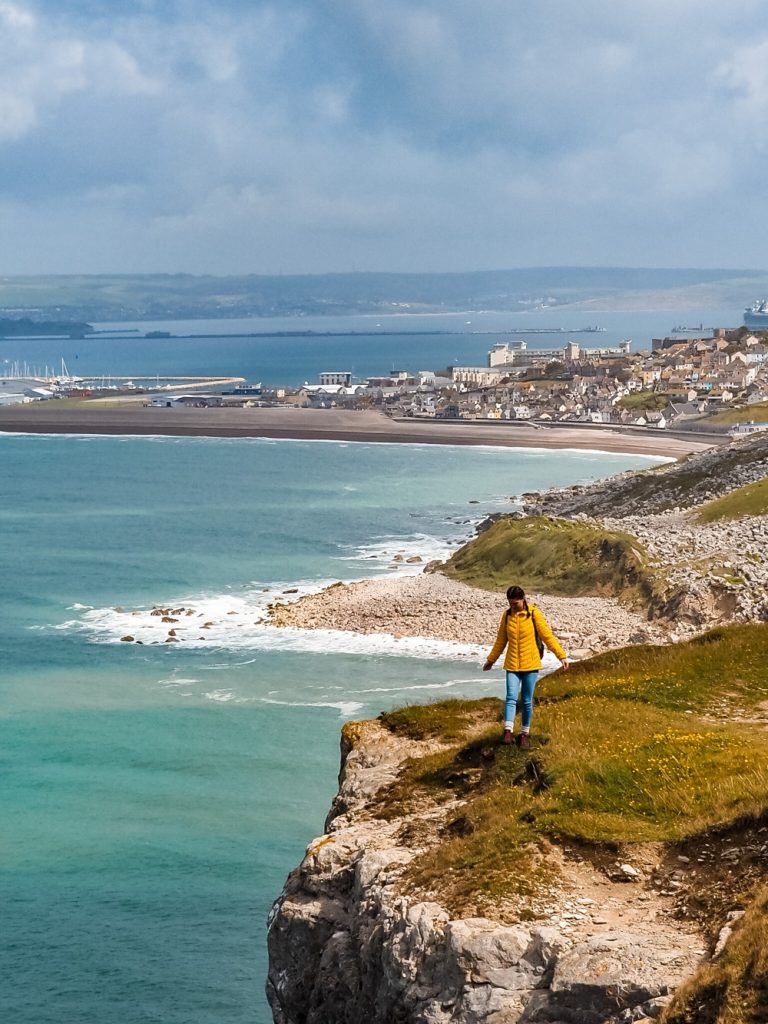
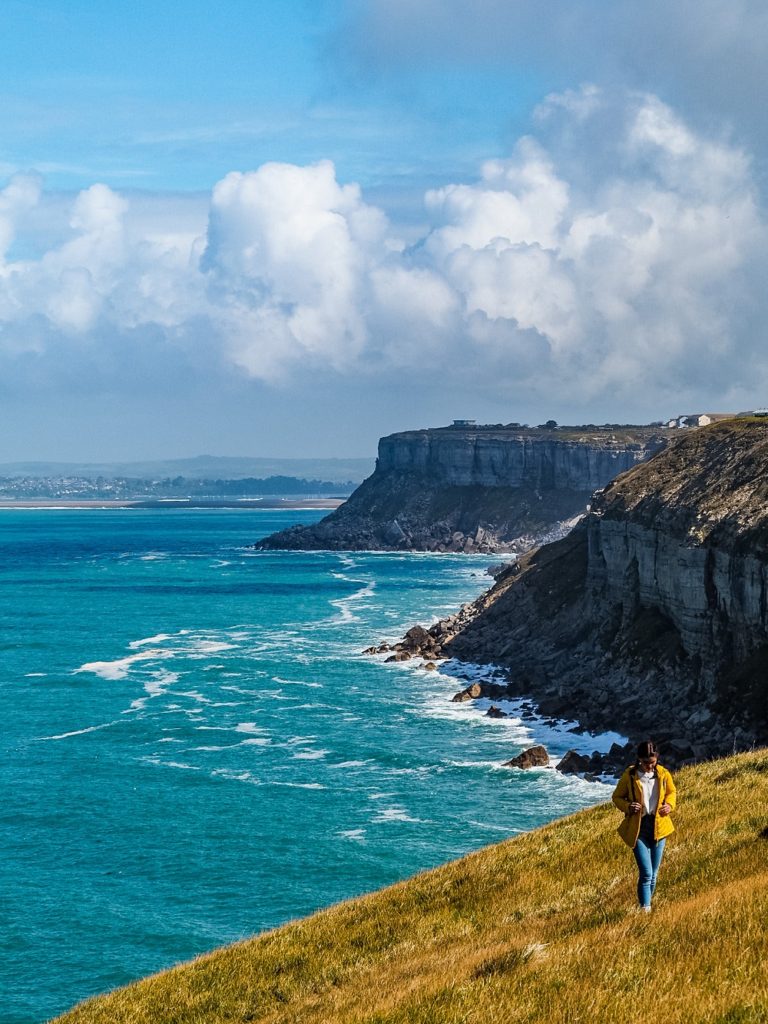
What to Wear and Bring with You?
You are in the south of England so the weather tends to be slightly better compared to the north. However, it can still change quickly, especially during the winter months.
At the time of our visit it was mainly dry and sunny. However, rain was forecast for the afternoon which we did get caught up in towards the end of the walk. Therefore, I recommend weather appropriate clothing when going on the Isle of Portland walk. You’ll be exposed along the majority of the trail. So, make sure you check the weather forecast before you set off and have a few layers with you. I was taking my jacket on and off as I felt warm one minute and cooler the next.
Whilst the trail is generally good, it can still be a bit uneven. Rain can also make parts of the trail muddy and slippery. Therefore, I suggest wearing comfortable walking shoes, boots or sandals.
I also suggest packing your own lunch and snacks and having plenty of water and hot drinks with you depending on the weather. You can stop for a picnic basically anywhere along the walk.
Please Note! – Whatever you bring with you, make sure you either take it home with you or dispose of it responsibly. There won’t be many bins along the coastline, so I suggest bringing a garbage bag with you to collect all your waste then dispose of it when you have the chance. Enjoy your time in nature but Leave No Trace!


7 Things to See Along the Isle of Portland Walk
The Isle of Portland walking trail is relatively easy to follow as it is clearly signposted for the most part. However, I divided the trail into 7 sections, following the main attractions you shouldn’t miss when walking around the entire Isle of Portland.
You can always park around the Olympic Rings Lookout Point and do the walk in reverse order.
1. Portland Bill Lighthouse
Portland Bill Lighthouse is located on Portland Bill, the southern end of Portland, which is also the southernmost point of Dorset. From Portland Bill car park you can immediately see the iconic white and red striped lighthouse.
The coast of Portland is known to be dangerous due to the strong tidal currents. This has resulted in a lot of shipwrecked vessels over the years. Therefore, Portland Bill Lighthouse still plays an important part in coastal traffic’s way-finding.
Did you know? – There are actually three lighthouses on Portland Bill. Higher Lighthouse and Lower Lighthouse used to work as a pair from 1716 until 1906 when they were replaced by Portland Bill Lighthouse. Today Higher Lighthouse is a dwelling and holiday apartment and Lower Lighthouse operates as a bird observatory.
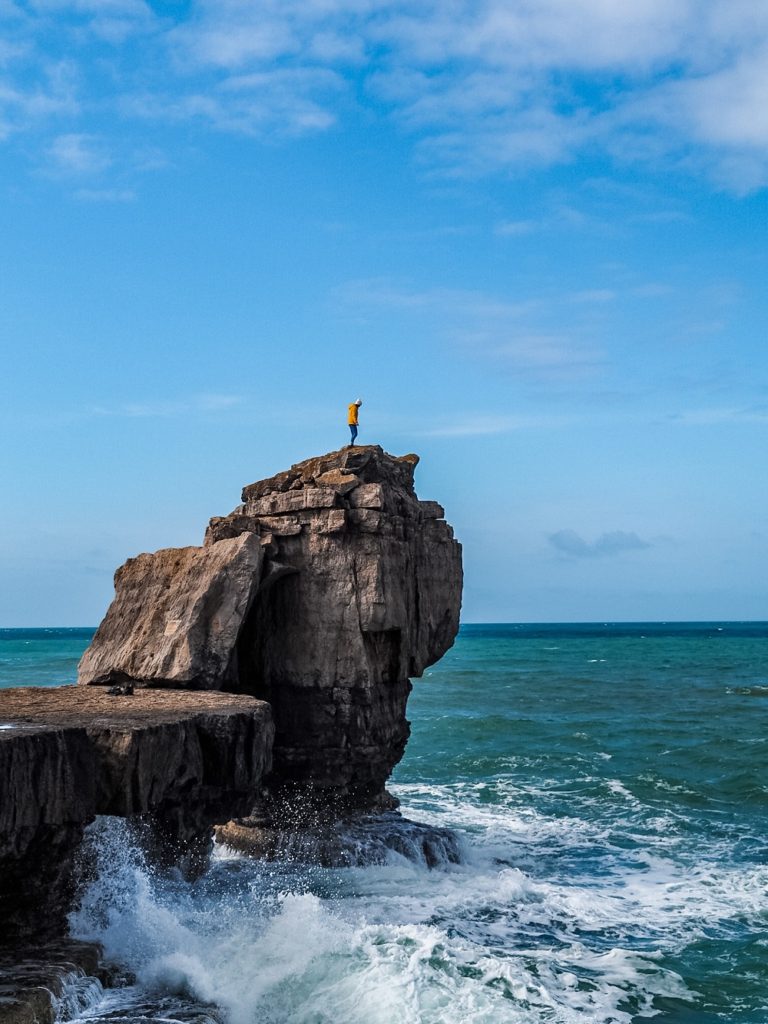
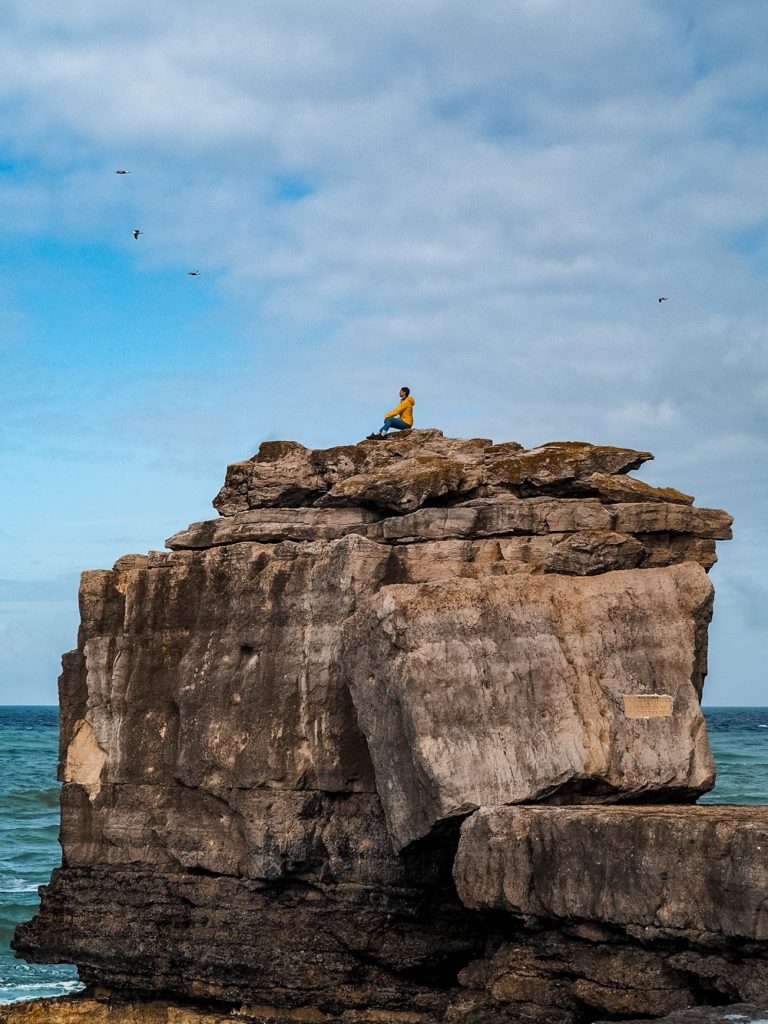
2. Pulpit Rock
Just a few hundred metres to the west of Portland Bill Lighthouse is a massive rock called Pulpit Rock. This unique formation is actually an artificial sea stack. The reason why Pulpit Rock is artificial is because it used to be a natural sea arch which was removed by quarrymen in 1870. The quarrymen’s intervention sped up the natural erosion process by thousands of years.
To reach Pulpit Rock you just need to walk to the west from the lighthouse. To reach the formation you have to walk through a pile of stones so just be cautious there.
Please Note! – Pulpit Rock has become a huge tourist attraction and it’s also favoured by photographers. In my opinion you can climb up and down pretty easily thanks to the holes in the open ‘bible’ that’s leaning on the rock. However, I wouldn’t recommend you climb it if you have a fear of heights or if the weather conditions are bad. We arrived during high tide so the waves were pretty high making the path wet and slippery.
Fun Fact – Pulpit Rock is actually a popular spot for tombstoning, which is jumping into the sea from a high vertical platform like this rock. Would you dare to tombstone here? (I personally wouldn’t…)
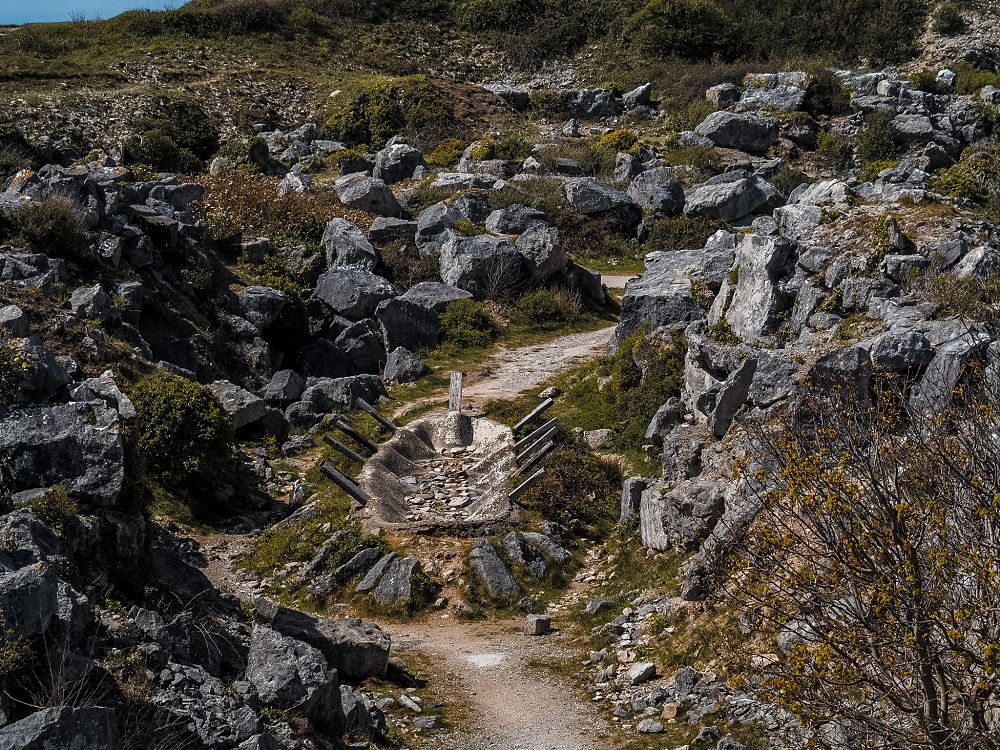

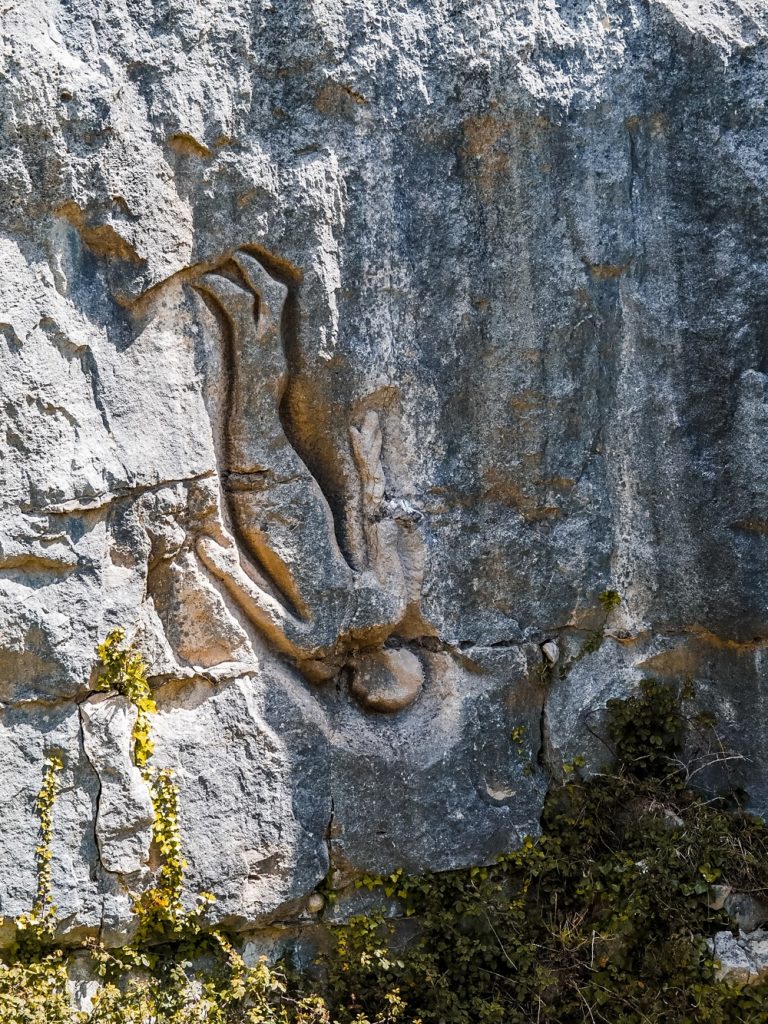
3. Tout Quarry Sculpture Park & Nature Reserve
Once you leave Pulpit Rock you’ll need to follow the South West Coast Path all the way to the top of Portland. The views along this trail are amazing so just take your time and take it all in.
As you get closer to the top of Portland, Chesil Beach and the surrounding area will be more visible. You’ll soon reach a very unique place called Tout Quarry Sculpture Park and Nature Reserve.
The quarry was active between 1780 and 1982, but today it is used to display more than 50 creative sculptures carved by skilled quarrymen. The quarry is also a nature reserve so if you enjoy wild flowers and butterflies you have to stop at Tout Quarry.
There are quite a few entrances to the park, and from the South West Coast Path you’ll be entering it somewhere along the side. I must admit the park is a bit of a maze. However, there is a map listing the location of all the sculptures at the main entrance. To find it, just head north sticking to the ‘main’ path. Don’t forget to look out for some of the sculptures along the way. Sometimes they can be a bit hidden or hard to see, which adds to the fun and will make you feel like you’re on a treasure hunt.
Please Note! – Some sections in the quarry might not be passable due to rock falls or overgrown shrubs. Also, if you’re a superstitious type and see a bunny then be extra cautious. (Refer to the ‘About the Isle of Portland’ section if you skipped that and have no clue what I’m talking about.)

4. Olympic Rings Stone Sculpture and Lookout Point
Your Isle of Portland walk wouldn’t be complete without stopping at the Olympic Rings Lookout Point. It’s only a few hundred metres to the north of Tout Quarry Sculpture Park. Once you leave Tout Quarry just follow the South West Coast Path. You’ll have to cross the A354 New Road so be careful as it’s a busy main road.
After a few minutes walking uphill, you’ll see the Olympic Ring Stone Sculpture and the magnificent view of Chesil Beach, Portland Harbour and Fortuneswell in front of you. Weymouth and Portland National Sailing Academy hosted the sailing events during the London 2012 Summer Olympics. To celebrate the area’s involvement a stone sculpture was commissioned to be built out of Portland Stone by the council. During the games it actually stood just outside Weymouth’s railway station, before it was relocated to Portland.
From this viewpoint you’ll be able to see Portland Harbour. It is actually one of the largest man-made harbours in the world. The harbour was used for the Olympic games, but it was also a Royal Navy base and played important roles in both the First and Second World Wars.
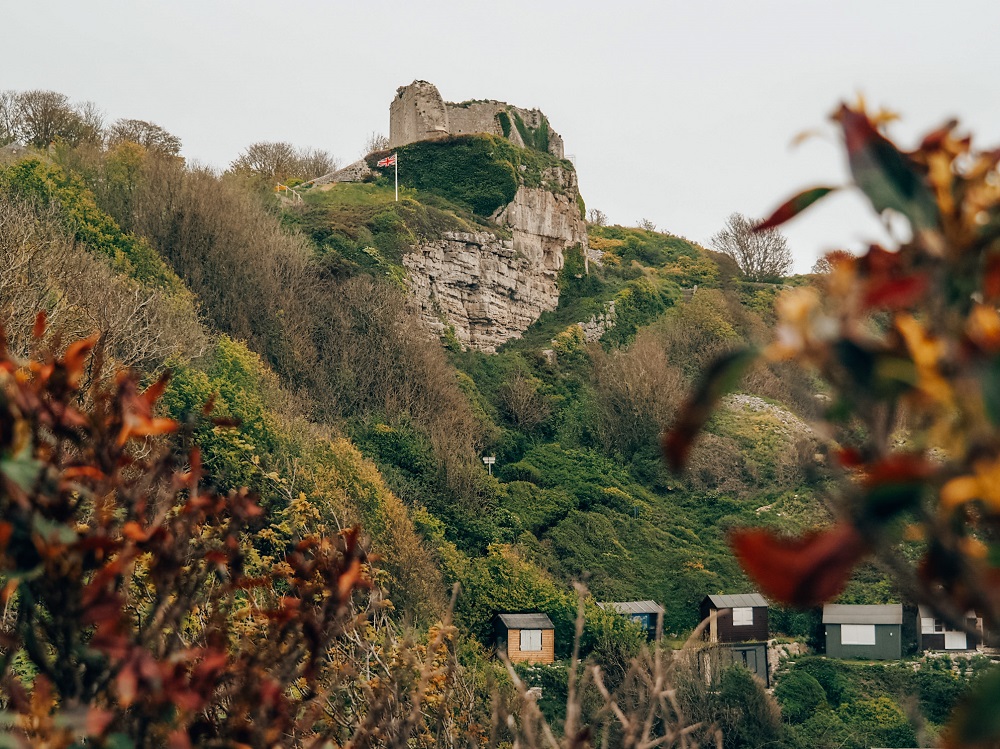
5. Rufus Castle
Once you’re ready to leave the lookout point follow the path to the east. You should see HMP The Verne on your left. This is one of two prisons on Portland. It used to be a big Victorian military fortress.
The path will take you through King Barrow Quarries Reserve. It’s slightly difficult to navigate through plus it’s an active quarry so watch out for vehicles on the roads. My advice is to just head southeast and you’ll soon join back onto the South West Coast Path. The trail will take you into the Grove and around the other active prison in Portland, an Adult/Young Offender’ Institution (HMYOI).
From the prison you’ll need to take the path on your left and walk all the way down the hill. There will be a few signs assuring you that you’re on the South West Coast Path. Once you’ve reached the bottom all you have to do is follow this path to Portland Bill Lighthouse.
But there are some interesting features along the eastern side of the Isle of Portland. So, make sure you don’t miss them. The first one will be Portland’s oldest castle, Rufus Castle, located just outside of Wakeham overlooking Church Ope Cove (Coordinates: 50.5385, -2.4294). The existing structure dates all the way back to the 15th century as it was built for King William II, also known as William Rufus. Unfortunately since it was built on a pinnacle of rock, parts of the original castle have been lost to erosion.
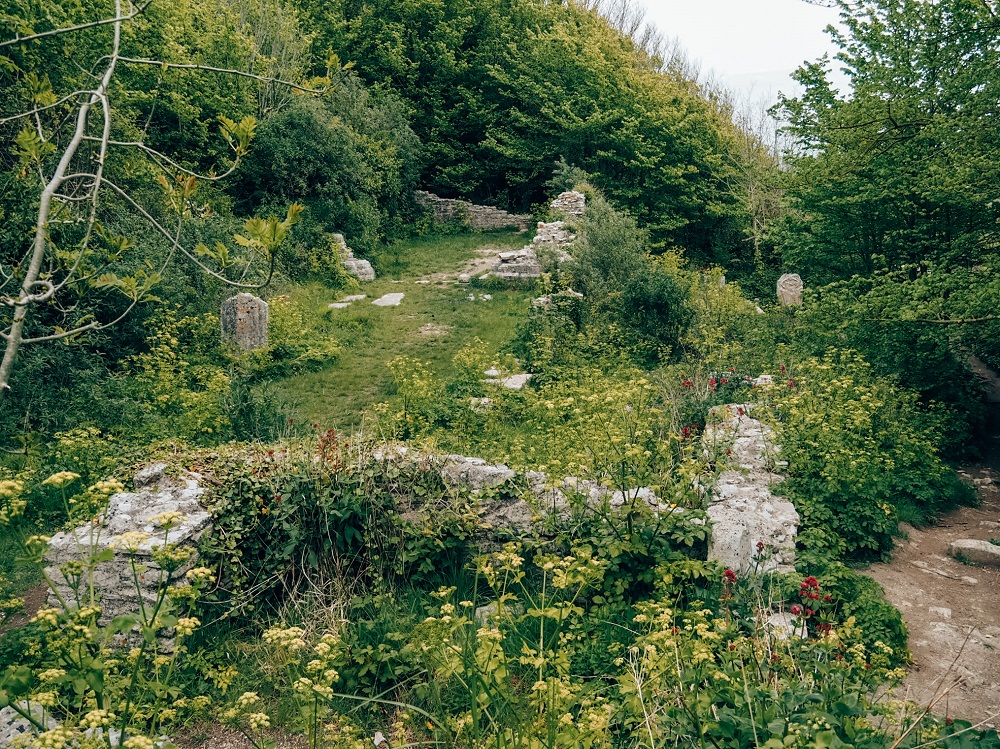
6. St Andrew’s Church
Just above Church Ope Cove and adjacent to Rufus Castle are the ruins of St Andrew’s Church (Coordinates: 50.539, -2.4292). The church is actually Portland’s first parish church and today it’s an important historical site. Originally the site was occupied by a Saxon church before a new church was built on its foundation. The church was rebuilt and repaired a few times over the years due to being burnt down and major landslips. It was operational until the mid-18th century.
You can see the very stark ruins of the church by following the sign upwards when you reach the top of Church Ope Cove.
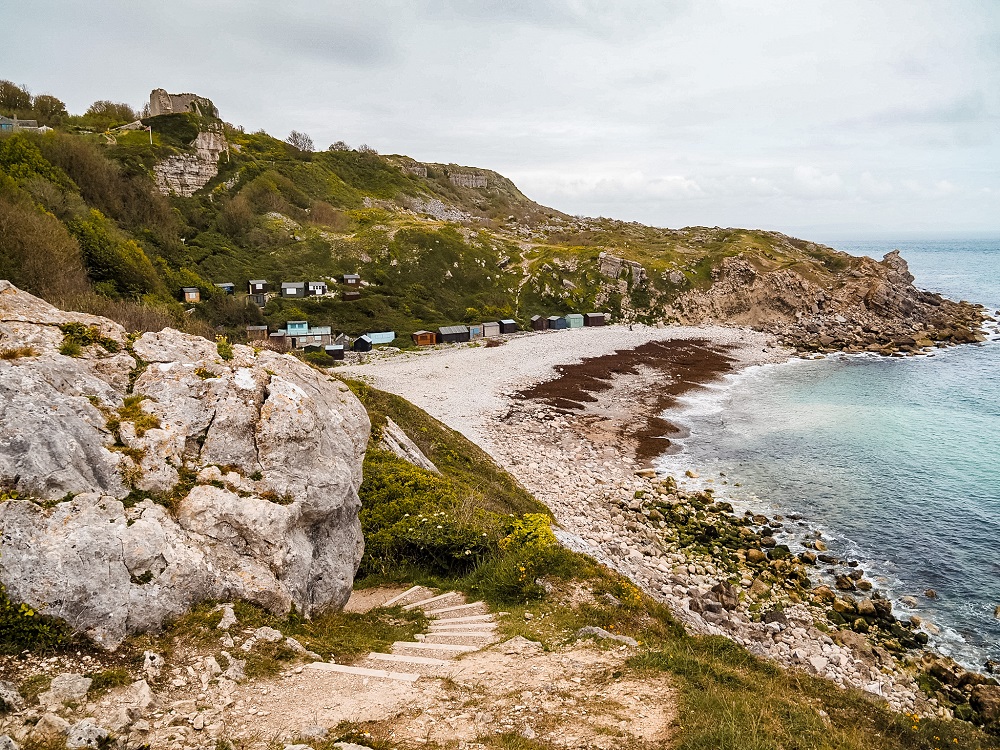
7. Church Ope Cove
After seeing the ruins of St Andrew’s Church head back towards the sea. Just in front of you will be Church Ope Cove (Coordinates: 50.5377, -2.4273). The cove might not look as magnificent as other coves along the Jurassic Coast like Lulworth Cove or Man O’War Cove but it’s quite an interesting site.
To start with the beach is one of only a few beaches on the Isle of Portland. Apparently the beach used to be sandy, but debris from the quarry now covers it which the sea then formed into pebbles.
Church Ope Cove was invaded multiple times over the centuries with the first recorded one being a Viking attack back in 789 AD. Since the beach is secluded it was also a spot for fishing which took place until the mid 20th century. Portland has a rich history of smuggling too and Church Ope Cove was a prime location for this kind of activity.
Last but not least, the cove is where the first steamer vessel, the Meteor, was wrecked in 1830. Today, the cove is popular with tourists who enjoy swimming, fishing, snorkelling and even diving to see the ship wrecks.
From Church Ope Cove you’ll just need to follow the South West Coast Path all the way back to Portland Bill Lighthouse. Once you’ve reached it you’ll have completed your Isle of Portland walk.
Additional hikes along the Jurassic Coast in Dorset
The Dorset section of the Jurassic Coast is definitely packed with some of the most amazing landscapes. Therefore, it also offers some of the greatest walking routes. Whilst you can walk the entire length of the coast by following the South West Coast Path, you can also break it up and explore it section by section. The latter is what we did and here is a list of great walks you can complete too:
Golden Cap and Langdon Hill Circular Walk – Explore Golden Cap by a 7 km long circular walk that takes in Langdon Hill, Seatown Beach, St Gabriel’s Chapel and St Gabriel’s Wood.
Old Harry Rocks Circular Walk – A 10 km circular trail that takes in the stunning Old Harry Rocks.
Durdle Door to Lulworth Cove Walk – A 5 km point to point walk exploring the iconic Durdle Door and the stunning Lulworth Cove.
You can also browse for more hiking trails in the UK and around the world in my Hiking Adventures Series.
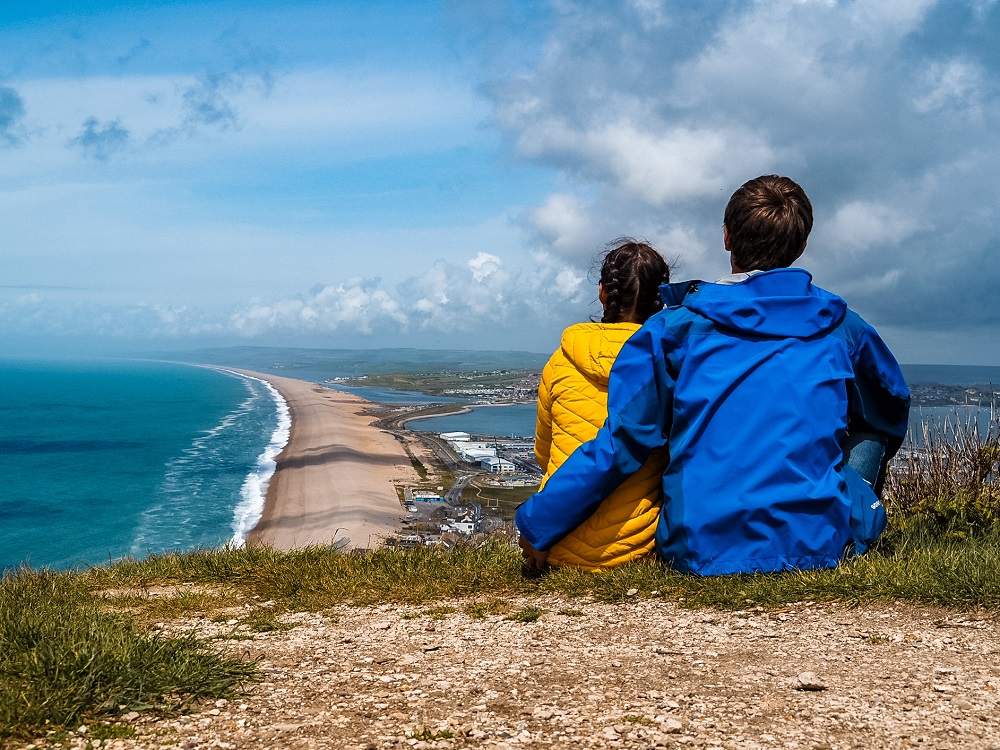
Final thoughts on the Isle of Portland walk
Whilst the Isle of Portland walk can feel slightly long, the number of unique features along this route definitely makes it one of the most interesting walks along the Jurassic Coast.
I must admit I enjoyed the scenery more along the western side of Portland. However, all the historical features along the eastern side definitely helped break up the lengthy walk.
Have you ever visited the Isle of Portland or the Jurassic Coast before? If so, how much of the area did you manage to explore? Let me know in the comments below.
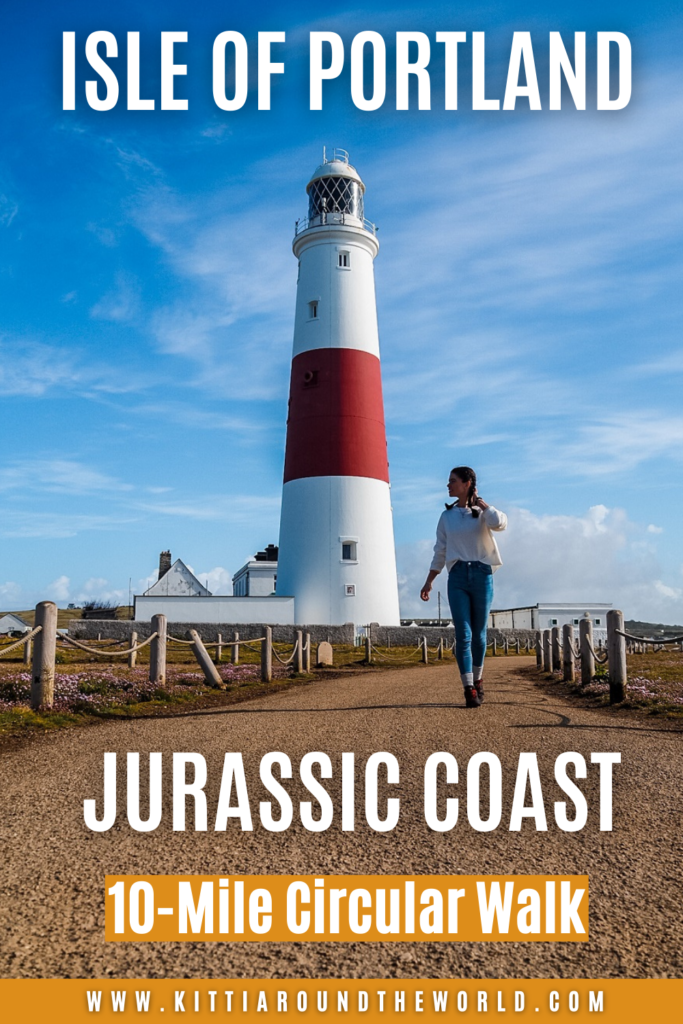
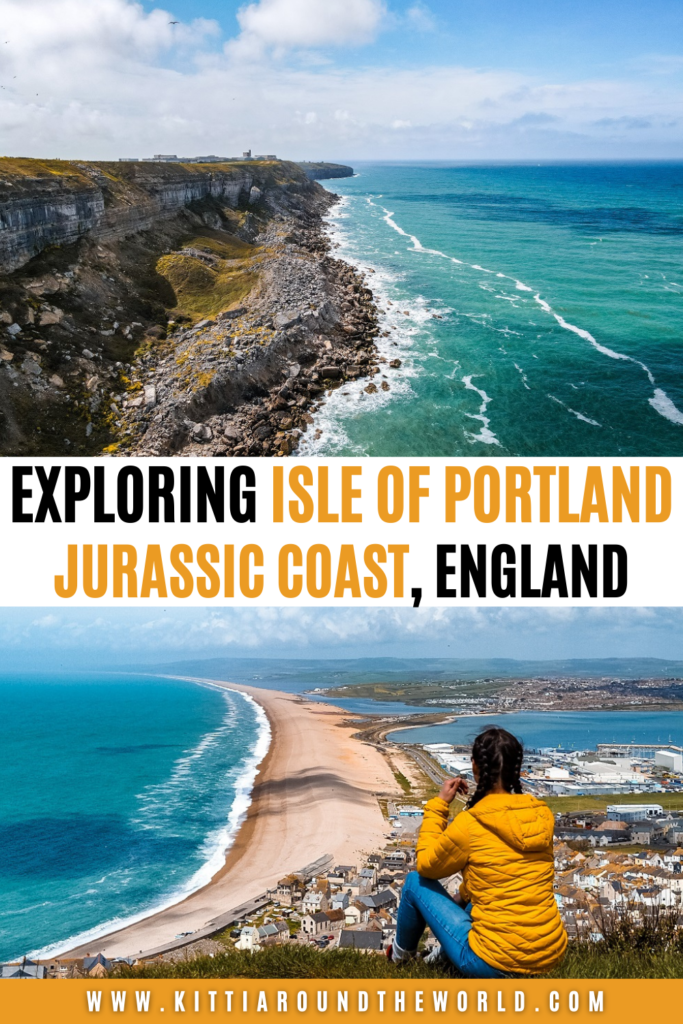

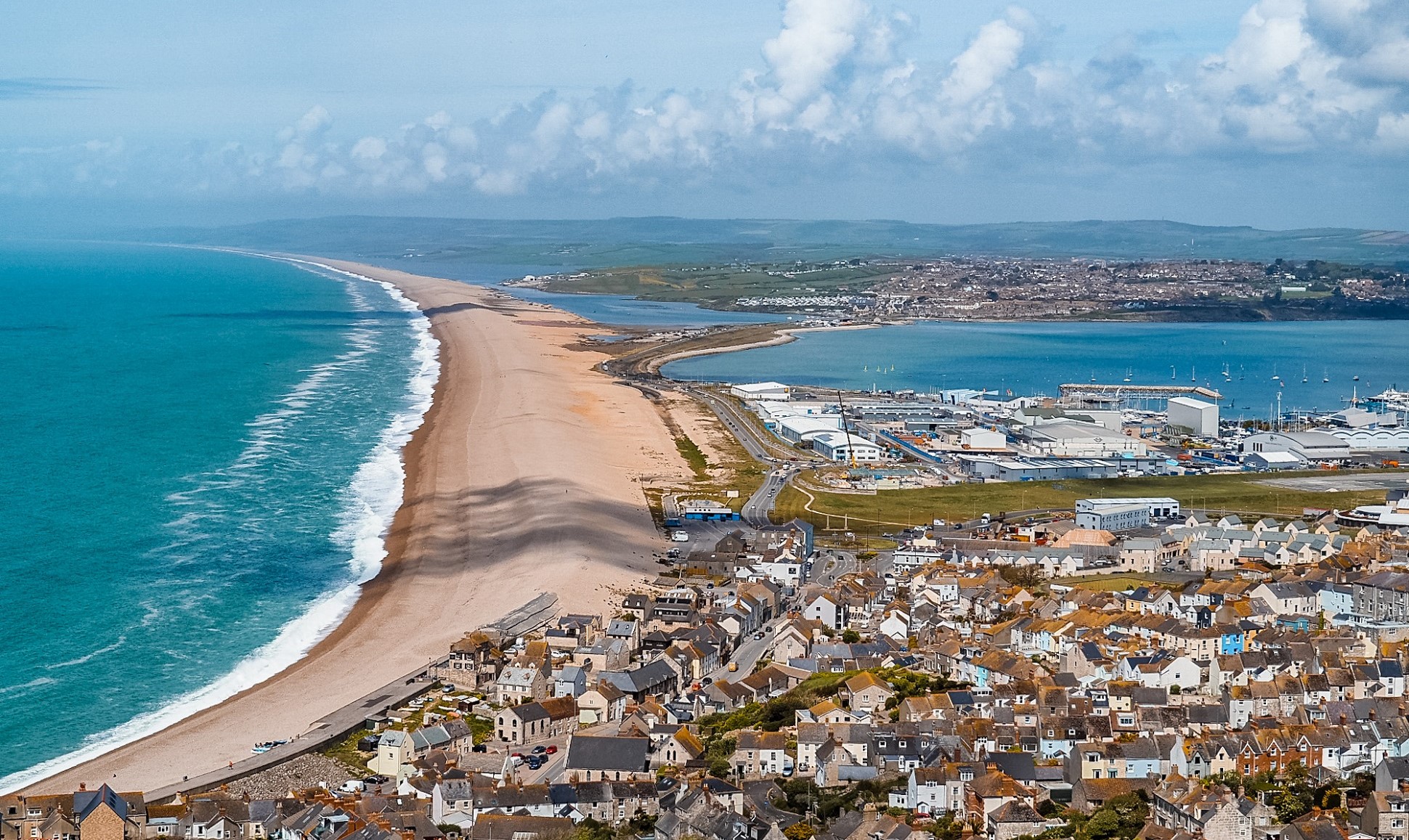
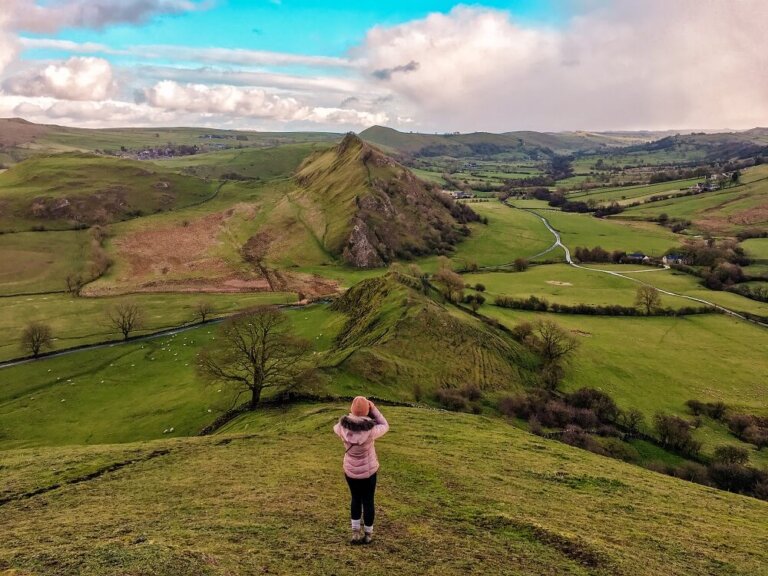
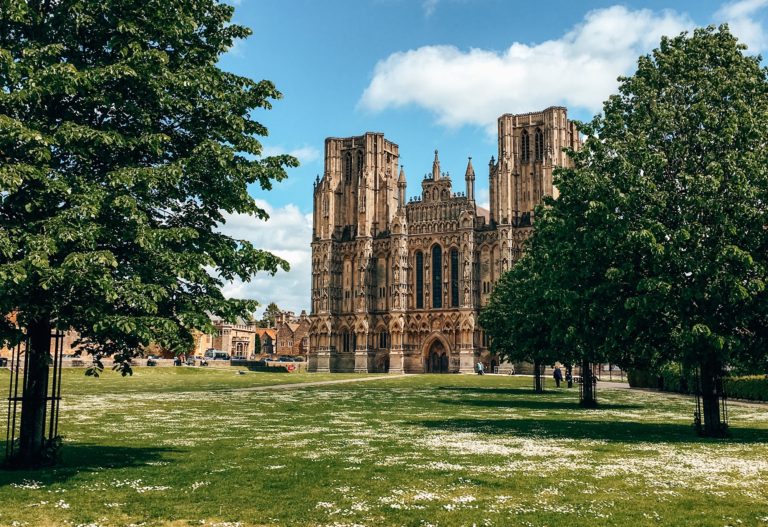
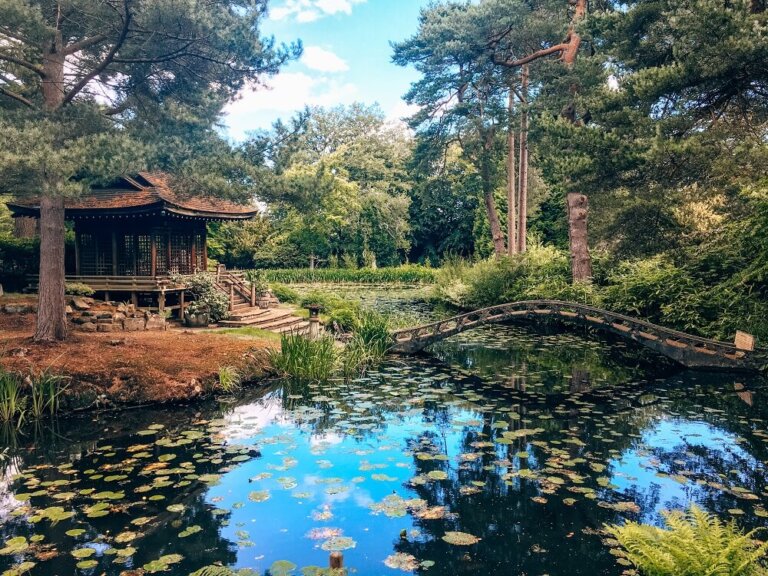
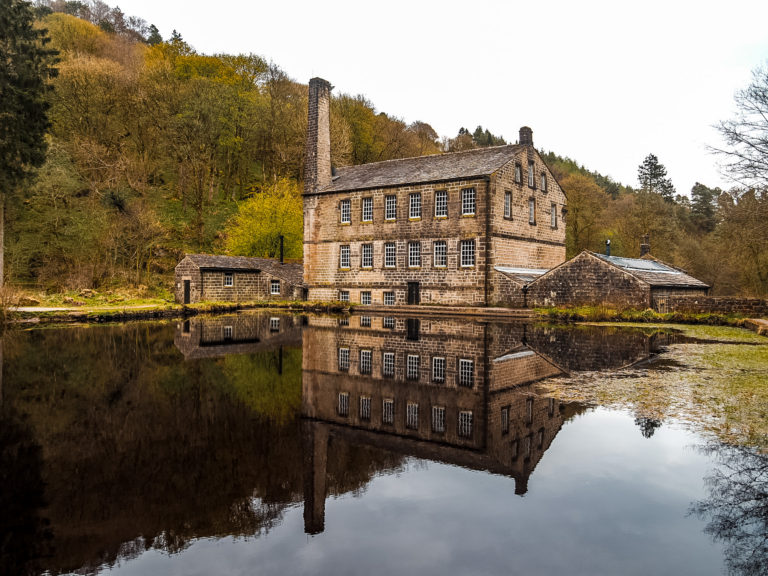
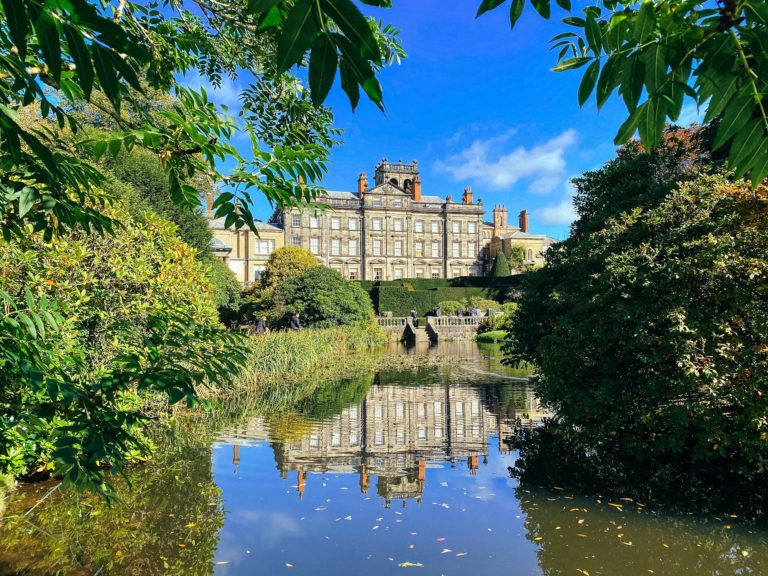
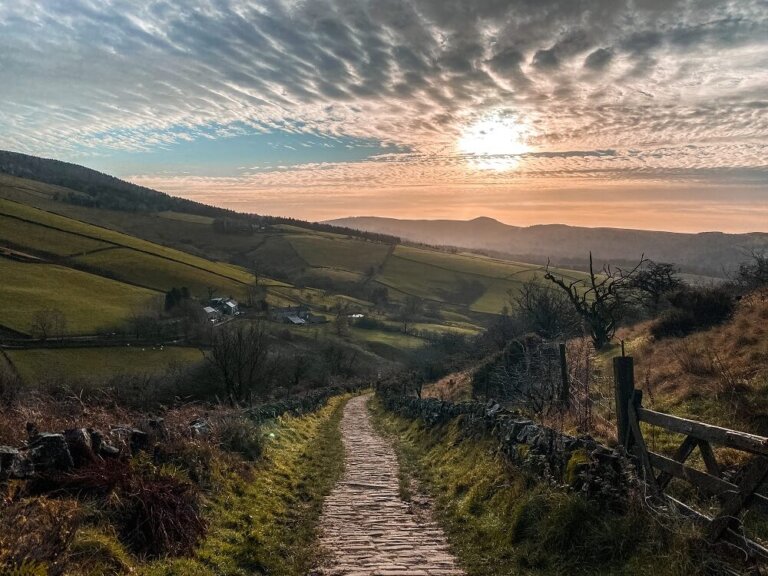
Pulpit Rock totally looks like a shot right out of a movie. What an incredible place!
Portland is definitely a great place to visit. My favourite spot was Pulpit Rock too, I absolutely loved climbing on top of it.
What a stunning walk! I love how dramatic the Jurassic Coast looks! And how blue the water is! What an incredible way to see it with a long walk along the coast path! Thanks for the great guide!
Thank you Hannah, I’m happy you enjoyed my guide around Portland. It’s definitely a great trail with many features and stunning views 🙂
Pulpit Rock looks so interesting to take a look at! The Isle of Portland looks like a fantastic place to visit in general, and it’s great that there are quite a lot of things to see in the area too.
What a beautiful walk! I’ve wanted to do this for so so long!
Oh I highly recommend a visit. Portland is so beautiful, I’m sure you’ll like it too.
Yes I also loved Pulpit Rock! It’s such a cool formation. I also enjoy walks with many interesting things to see so this one was definitely a great one to do.
I love that it’s a “isle” but you can drive to it or even take a bus! Such a comprehensive guide, my one stop for everything when visiting Isle of Portland.
Thank you so much for the lovely comment I’m so happy you found my guide useful and interesting. I also think that Portland is so unique in the way it’s connected to the mainland so definitely a bucket list destination.
What a beautiful blog, very thorough and lovely photos!
Thank you so much Bella, I’m happy you enjoyed reading it.
Can we take a moment and appreicate the name Jurassic Coast. 🙂 Bad jokes aside, this looks like a great destination to add on to our existing Portalnd itinerary!! Thank you for such a comprehensive guide 🙂
Haha thank you Sophia, I’m glad you enjoyed my blog. I hope you’ll enjoy your visit to Portland 🙂
What an interesting place! Who knew this small ‘Island’ had so much history. I knew about Portland Stone and the quarrying, but not the rest. I think I also read somewhere it was once a leper colony, a very long time ago, but can’t remember if this was fact or fiction!? Thanks for a great and comprehensive guide.
Thank you Karan, I agree, Portland is definitely filled with history! I’m glad to hear that you knew about some of the facts. I’ve never heard about it being a leper colony, so I’ll need to do some online research about that 🙂
I’ve always heard of the Jurassic Coast but didn’t know there was so much to do aside from visiting the beach!
Yes I was the same! I knew about a few well-known places but the coast definitely exceeded my expectations. It is now definitely one of my favourite areas in England.
Wow! I would have never known about the bunnies and the quarry. I loved all the tips and tricks you shared and checking out what device you used for each beautiful photo.
Thank you Chelsea I’m happy you found my photo guide useful. I was so surprised by the bunny superstition too but I guess working in a quarry can be very dangerous.
We keep on adding stops on a very long road trip in the UK. The Jurassic Coast sounds awesome and worth several days. We would definitely plan to do the Isle of Portland walk. Love the variety in the rocks. And those coastal views will get me every time!
Haha yes, I know the feeling of a constantly growing itinerary. But yes, the Jurassic Coast is definitely worth stopping of at for a few days. I hope you’ll enjoy your road trip!
I will definitely visit the Isle of Portland if I get to the Jurassic coast!
Glad to hear that Denise, I’m sure you’ll love exploring it!
This place looks ABSOLUTELY gorgeous!! And I love long outside walks, so it’s right up my alley. It’s even better that it’s a loop walk – those are much preferred for me.
Thank you so much! Yes I’m the same, I love circular walks a lot, so you don’t see the same route twice. This was is definitely an excellent one if you like both long and loop walks 🙂
I used to live very close to the Jurassic Coast, miles away from its start. I did go to Portland before, I remember kayaking there a long time ago. The scenery was so pretty.
Oh how amazing that you used to live close to the Jurassic Coast! I bet it was so much fun kayaking in the area too 🙂